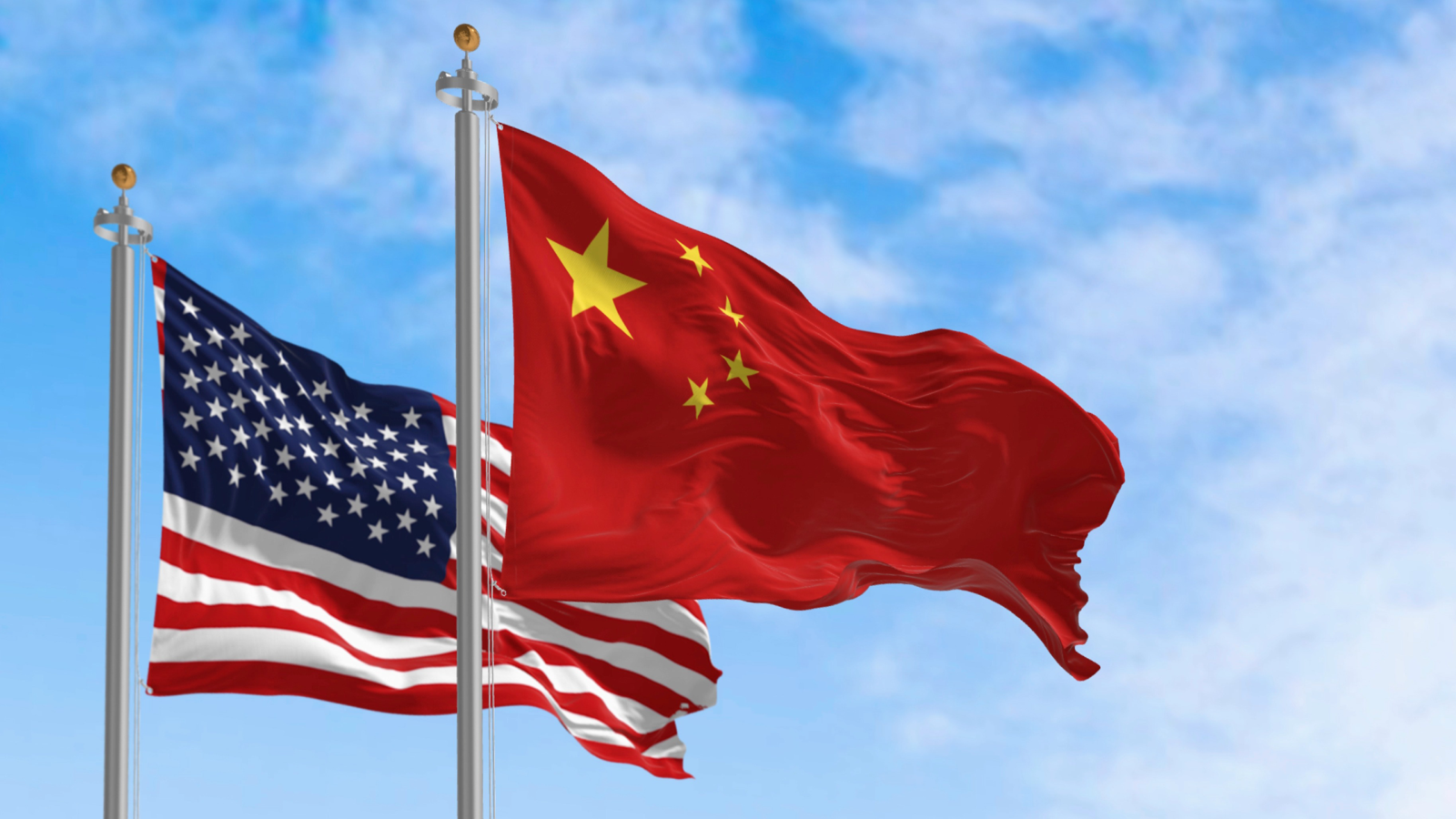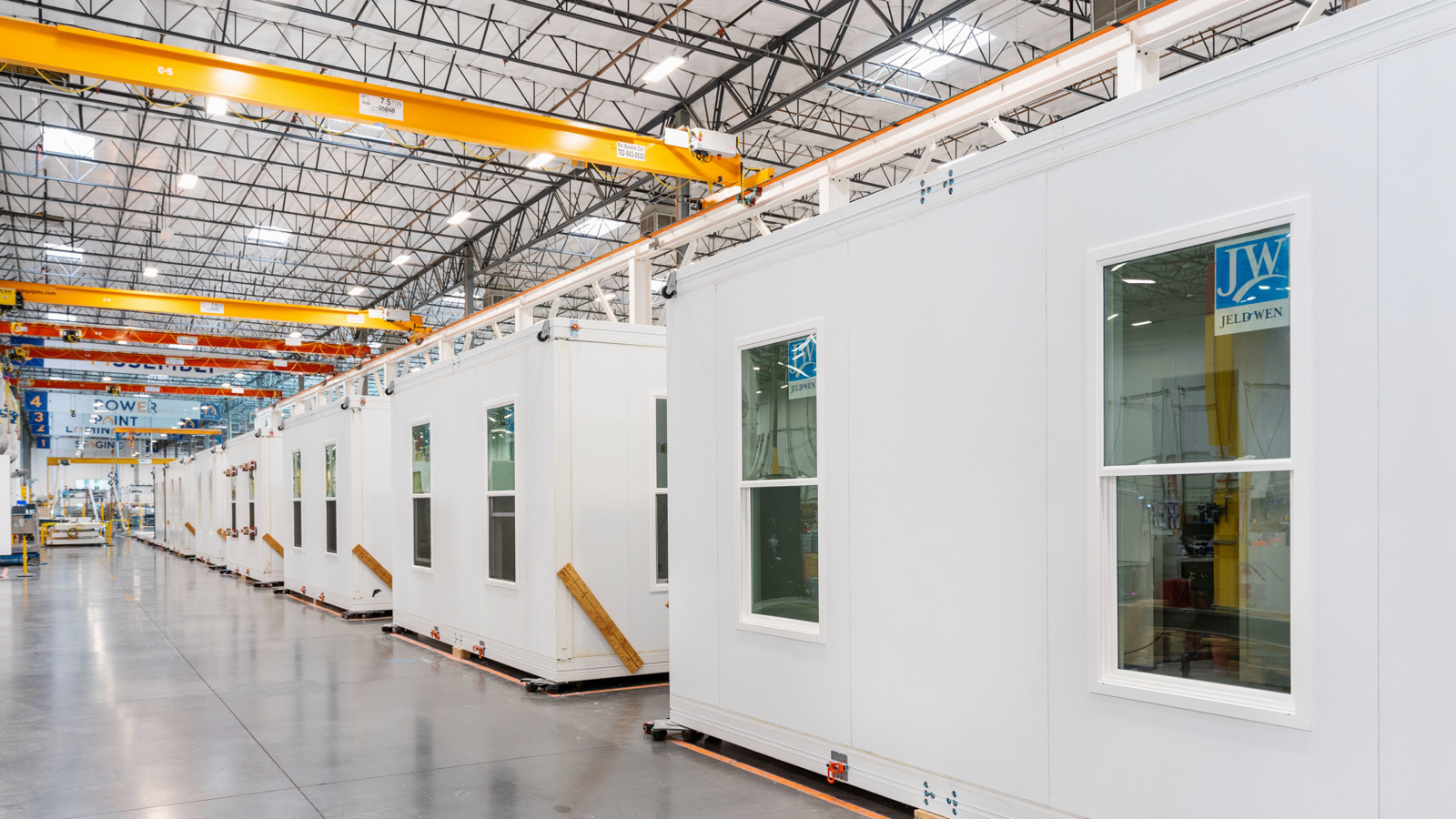Good morning.
The president is under pressure, and that’s the way he likes it. No, we’re not talking about the increased stress (we assume? hope?) he must be feeling from launching a global trade war.
As the world focused on an ongoing financial meltdown, POTUS this week took the time to focus on another top issue of the day: restrictions on water flow placed on American shower heads. On Wednesday, those restrictions were loosened via executive order to allow shower heads to spray more than 2.5 gallons of water per minute, which is apparently the sweet spot for a good shower if you ask the president. For everyone else, like it or not, a harder rain is gonna fall.
A Tale of the Tape in the US-China Heavyweight Trade Bout

Who has the upper hand in a US-China trade showdown?
In the red corner, with an $18.8 trillion 2024 GDP, is China, the only country not granted an exemption from President Trump’s about-face on tariffs. In the red, white and blue corner, boasting a $29 trillion GDP, is the USA. Both countries have now slapped astronomical tariffs on each other, which could cause pain the world over. Here’s how things stack up.
Who Blinks First
As of Thursday, the US tariff rate on most goods from China is now 145%, the White House said. Goods headed the other way are subject to an 84% levy from Beijing announced Wednesday. And one could describe this scenario with the tagline of 2004’s Alien vs. Predator: “Whoever wins, we lose.”
For a start, Ngozi Okonjo-Iweala, the director-general of the World Trade Organization, warned that global GDP could fall nearly 7% in the long term if the world divided into two trading blocs — she added that “merchandise trade between these two economies could decrease by as much as 80 percent.” Then there’s the impact the two economies could have on each other:
- The US ran a $295 billion trade deficit with China in 2024, amounting to nearly 1% of the US economy. China is already struggling with stagnating productivity, a beleaguered property market, high youth unemployment and weakening growth, with Goldman Sachs cutting its forecast to 4% from 4.5% this year. Losing significant access to its biggest customer could make all of these worse.
- In the US, the impact will be felt in the country’s own struggle with inflation: Top US imports from China include smartphones, laptops, appliances, lithium-ion batteries, plastics and raw materials. The Yale Budget Lab found that, even with tougher tariffs outside of China postponed, consumers now face an effective tariff rate of 27% and the average US household may lose $4,700 per year in spending power.
The Budget Lab added that, with the current tariff levels, US and Chinese economies would both be 0.6% smaller in the long run, an effective draw.
While America is the buyer in the relationship, one US sector that will be heavily impacted is farmers: China is the buyer of 14% of all America’s agricultural exports, importing more than $27 billion in 2024, according to the U.S. Department of Agriculture.
Bunker: During a press briefing on Wednesday, Atlantic Council Global China Hub senior director Melanie Hart warned that China, wiser thanks to trade fisticuffs with Trump in 2018, has built up a system of retaliatory measures it has begun to deploy like export controls on critical minerals and blacklisting US companies from exports. “They have a bunker that they’ve been building for this moment,” she said. “They’re in the bunker, and if I’m Xi Jinping, I’m feeling a lot more comfortable than Donald Trump today.”
Homes In 4 Hours? Assembly Line Revolution Hits Housing

BOXABL is the home construction company bringing assembly line automation to the home industry. With their patented technology and 53 patent filings, BOXABL believes they have the potential to disrupt a massive and outdated trillion dollar building construction market. And they just reserved the ticker symbol BXBL on Nasdaq*!
Most houses take seven months to complete. BOXABL can put one out of the assembly line every four hours, including electrical, HVAC, and plumbing! Now, the company is raising funds and has made shares available to the public but the round is closing soon on StartEngine!
Currently, shares are being offered at $0.80 per share. With a $1,000 minimum investment, you can join 40,000 investors to help solve the housing crisis.
The closing date has been extended due to investor interest. Time is running out to invest in BOXABL on StartEngine. April 14th is the last day to invest in BOXABL on StartEngine.
Just in Time for Tariffs, Consumer Prices Finally Drop
Hey Jerome Powell, we think we can finally say: Mission accomplished. Unfortunately, your next mission is already here and, should you choose to accept, it may prove impossible.
Thursday delivered the latest consumer price index report, which showed that inflation didn’t just cool in the month of March, but rather that consumer prices actually decreased. Unfortunately, the report captures the last moment in time before the White House’s “Liberation Day” package of tariffs. Which means consumers barely had time to recognize — or even notice — the end of one inflationary event before they could be slammed by the next.
Fed Up
That’s right: CPI fell 0.1% in March, according to the US Labor Department, marking the first month-over-month decline since May 2020. That beats most economists’ expectations of a 0.1% month-over-month rise, according to a Wall Street Journal survey; a 2.4% year-over-year increase also comes in below expectations of a 2.6% rate. Gas prices fell a full 6% in the month.
Parade, meet rain: In these times, well … “the data seems stale,” Beth Ann Bovino, chief economist at US Bank, told the WSJ. Even with Wednesday’s U-turn away from extreme reciprocal tariffs, the remaining 10% levy on most countries’ imports and a total levy of 145% on Chinese imports still represents a marked increase in the cost of business moving forward, which will more than likely trickle down to consumers. Which is why Powell and his merry band of central bankers are hardly celebrating the latest CPI figures — in fact, they’re worried about more than just inflation returning:
- Minutes published Wednesday from the Fed’s March 18-19 meeting, before Liberation Day, showed the central bankers were already wary of incoming tariffs: “A majority of participants noted the potential for inflationary effects arising from various factors to be more persistent than they projected.” Translation: Don’t expect the Fed to be in a hurry to cut rates.
- The central bank seems to know it may be in a pickle, as conditions that usually spark rate cuts may soon be present: The monetary policy committee, which sets the benchmark interest rate, said it might “face difficult tradeoffs if inflation proved to be more persistent while the outlook for growth and employment weakened.” Translation: the Fed is officially concerned about looming stagflation.
Don’t Count Your Chickens: Fueling the decreasing consumer prices? Gas prices, which fell 6%, and used car and truck prices, which were down 0.7% (though don’t expect that dip to last, as the White House is continuing to impose a 25% tariff on automobile imports). On the flip side, food costs rose 0.4%, thanks to a return of egg-flation: a nearly 6% rise in the price of eggs. That brings egg prices to the highest level ever recorded by the index, despite a noted downturn in bird flu cases in March. As always, it’s best to not count your inflation wins before a global trade war cracks a few of them.
Walmart, Uniqlo Join Retailers Touting Ways to Navigate Trade War
After watching their stock prices become collateral damage in a trade war, retail executives have crafted a game plan: spend the next 90 days determining the best course of action if the US resumes duties on imports from countries with whom it can’t cut a deal.
A handful of executives hinted this week that they are already eyeing some strategic advantages and opportunities.
Looking for Plus Signs
One of the most detailed assessments from a corporate leader so far came Thursday when Japanese billionaire Tadashi Yanai, president of Uniqlo-owner Fast Retailing, addressed his company’s latest earnings. Uniqlo does roughly 7% of its business in the North American market — compared with 30% in Japan and 29% in China, Hong Kong and Taiwan — but it’s still seen as key to growth.
Noting Uniqlo sources its clothing from factories in China, Vietnam, Bangladesh and Cambodia, Yanai suggested the era of “China plus one” is nearing its end. That refers to a business diversification strategy of moving some manufacturing out of China to one other place in order to blunt the impact of exposure there. Yanai noted having manufacturing in more than plus one means the ability to shift production to spots where trade deals end up being the most favorable, noting “adversities present opportunities.”
While Uniqlo said it expects profits to take a 2% to 3% hit and North American sales to drop 20% in the second half of its fiscal year due to tariffs, the company was bullish about its prospects and revised its net profit estimate for the year ending in August up to a record ¥410 billion ($2.8 billion) from ¥385 billion ($2.6 billion). While Yanai noted a path to navigating tariffs, another retail executive said any sort of downturn could help low-cost retailers:
- “History tells us that when we lean into these periods of uncertainty, Walmart emerges on the other side with greater share and a stronger business,” the retail giant’s CFO John David Rainey said on Wednesday as the company reaffirmed its forecast that sales will rise 3% to 4% this quarter.
- Walmart has emphasized in recent years that it has gained customers stressed out by inflation, including people who make $100,000 or more (they accounted for 75% of its market share gains in the third quarter of last year).
Call in the Task Force: Levi Strauss CEO Michelle Gass said Monday that the company has convened a “task force” that could assess where its products come from, echoing Yanai (Levi imports to the US from 20 countries). She also said the company could start “test pricing” where it sells directly to consumers, aka gauging their appetite for price hikes if a global trade war does happen (though Gass emphasized any price changes would be done “very surgically”).
Extra Upside
- The Ozempic Effect: As the weight-loss drug market surges, WW International (a.k.a., WeightWatchers) is preparing to file for Chapter 11 bankruptcy amid sinking sales.
- Taking Swings: Major League Baseball is considering implementing a salary cap as it faces a new collective bargaining agreement and potential lockout in December 2026.
- Most Houses Take Seven Months To Complete. BOXABL can put one out of the assembly line every four hours. Invest now on StartEngine at $0.80/share. Join 40,000+ investors before the April 14 deadline.**
** Partner
Just For Fun
Disclaimer
*This is a paid advertisement for Boxabl’s Regulation A offering. Please read the offering circular here. This is a message from Boxabl.
*Reserving a Nasdaq ticker does not guarantee a future listing on Nasdaq or indicate that BOXABL meets any of Nasdaq’s listing criteria to do so.

